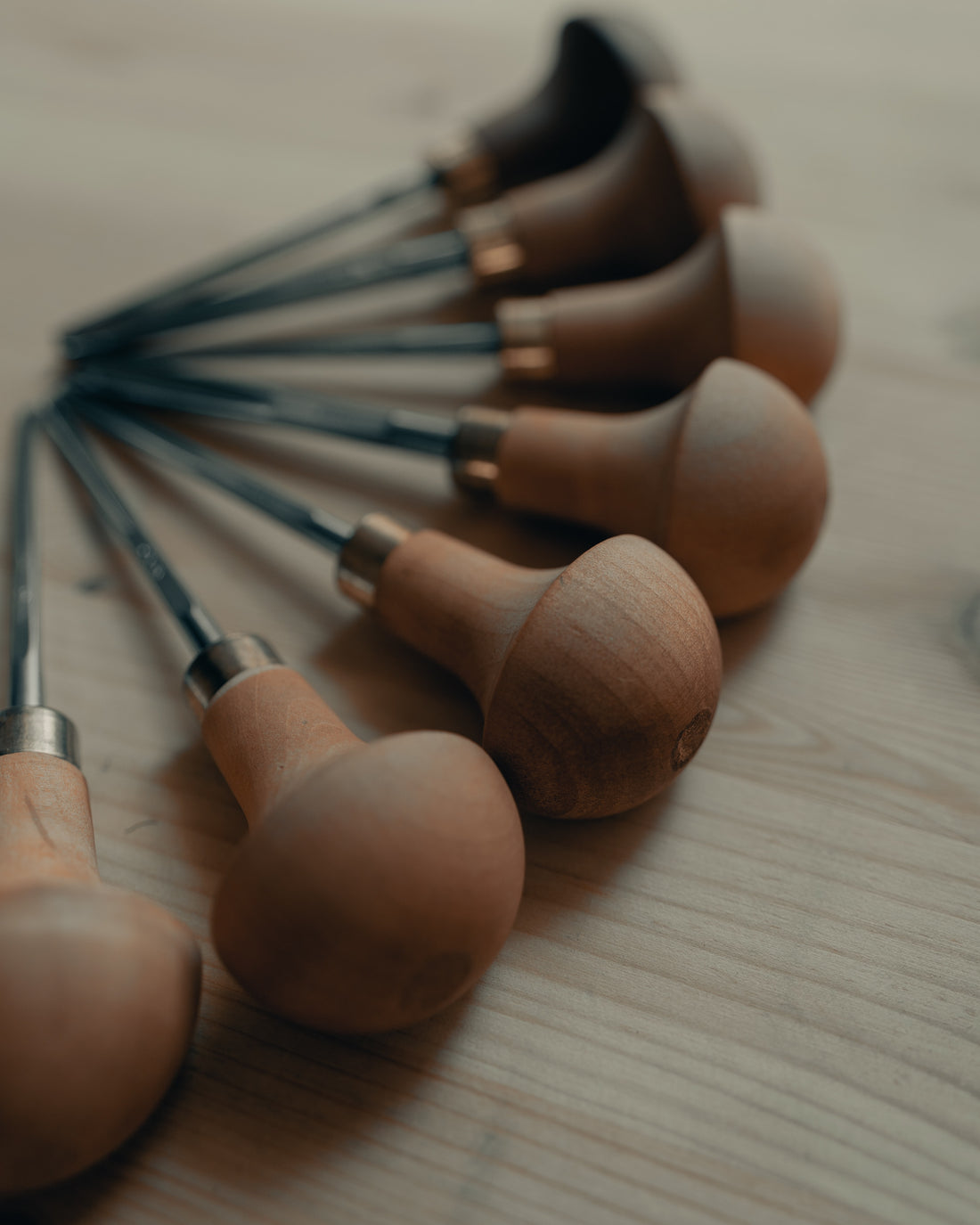One thing I am asked about all the time is what tools I use to create my linocuts. Printmaking tools can vary across regions, disciplines, and personal preferences, but for relief printmaking, they usually fall into one of these essential categories:
- Carving tools
- Linoleum blocks
- Brayers
- Barens
- Inks
- Paper
Below I've detailed some of my favorite tools and the brands that make them. A quick note that none of the links below are affiliate links, and I am not being paid to endorse any of these products. Links are only used to point readers in the direction of additional details on each products I use.
Carving Tools
For relief printmaking, I prefer to use Flexcut or Pfeil carving tools. Flexcut tools are affordable, high-quality, and easy to use. Pfeil tools can be a little bit more expensive, but are considered the gold standard of relief carving tools. I use Flexcut's Micro carving set and Pfeil's tiniest U gauge for most of my prints.
With carving tools, it is essential to keep your tools sharp to make carving easier and prevent injury (like how keep your kitchen knives sharp in order to prevent slicing off a finger). I use the Flexcut Slip Strop kit for all my carving tools and it has been a worthwhile investment. I also recently invested in a waterstone and I use it when my tools need a really thorough sharpening (like a deep conditioning treatment for hair).
Linoleum
The choice of what kind of linoleum you use to make your linocuts is largely left to personal preference. There are many different kinds of linoleum or rubber to create with, and I have tried quite a few in my search for carving nirvana. I found the classic battleship gray linoleum to be too brittle, but some of the rubber blocks to be too soft. As of right now, I use Blick Art Materials' Golden Cut linoleum and Speedball's Speedy Carve rubber (the pink one). I find these to be perfect for my linocuts and rubber stamps.
Brayers
A brayer is the device you roll your ink with. It's often a rubber roller attached to a handle for rolling out ink. I currently use Speedball's soft rubber brayers, although my dream is to someday have a collection of (expensive) Japanese brayers.
Barens
A baren is the tool you use to work the ink from the block into the paper when printing by hand. This is often a flat device with a little handle for pressing, or a large kitchen spoon. I honesty prefer the large kitchen spoon method, the concave surface is perfect for getting all the little details worked into the paper. I also use a flat wooden serving spoon/spoon rest for pressing and rubbing the ink into the paper. This one is all about personal preference, so if you're starting out in linocuts, try a few different options! Thrift stores are great places to find single large spoons for cheap.
Inks
Since I am committed to being a toxin-free studio wherever possible, I wanted to find a printmaking ink that could be cleaned without the use of paint thinner or mineral spirits. Enter Speedball Professional Relief Inks! These inks are oil-based yet clean up with soap and water. Unless a print calls for a specific metallic or fabric ink, these are the only inks I use in my studio.
Papers
Ah, the fun stuff! As a design school graduate and lifelong print lover, I have a slight obsession with paper. There are a few considerations I make when it comes to choosing the right paper for an edition; weight, color, and manufacturer. The weight of the paper is an essential consideration, since printing by hand often doesn't yield enough pressure to print on heavier papers. I try to choose papers that are 80gsm or lower so that the print comes out clean and not patchy or missing areas of ink. The color of the paper is also essential, as the paper is just as much a part of the finished piece as the actual inked area. I also try to support paper manufacturers in the USA or Japan, as the Japanese are the global experts in fine art paper creation. Some of my favorite papers to use right now are Japanese Okawara, Kitakata, and Kozo, plus handmade paper from local artisans.
--
I hope this list was helpful if you're starting to get into printmaking, or were just curious about the tools I use every day. If you have any other questions I didn't answer, feel free to contact me here on my website or shoot me an Instagram DM.

